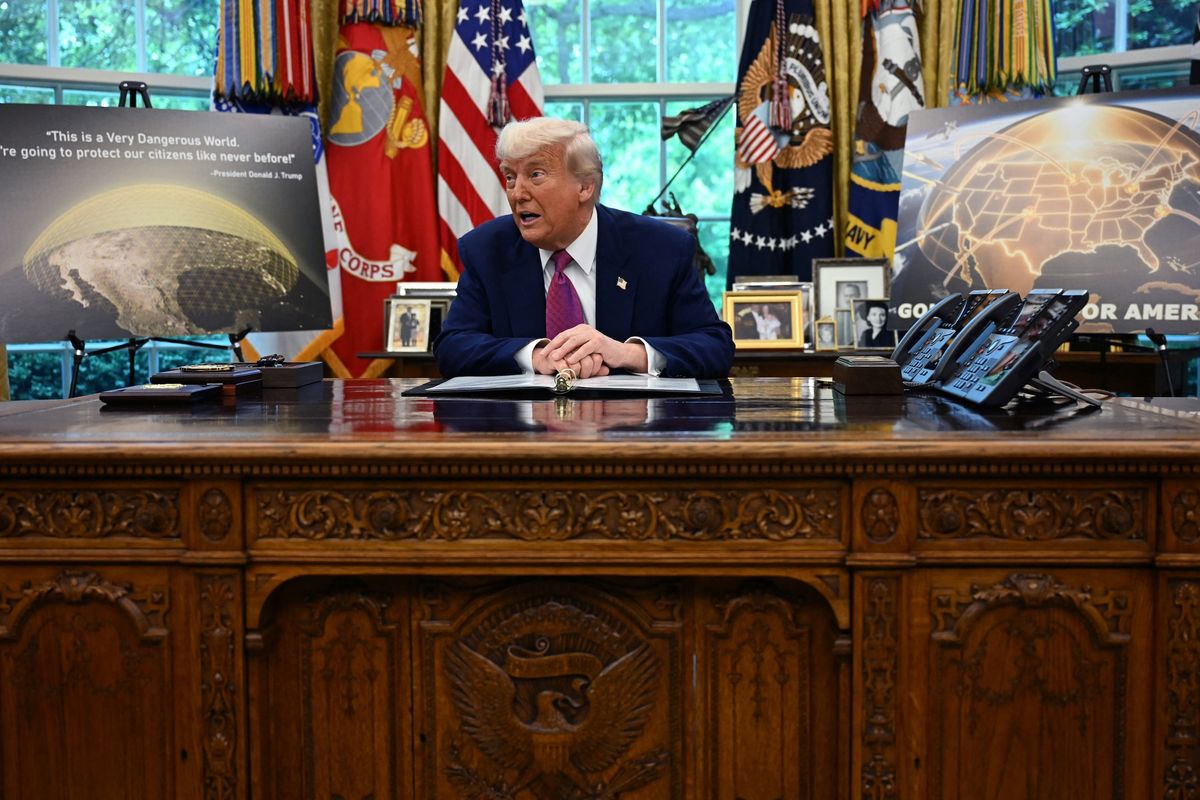Space sparks a wide range of emotions. Since the 1960s, advocates have invoked the ideals of pure science, exploration, and fundamental human curiosity to push for an expansive – and expensive – vision of U.S. space policy. As both the grand embodiment of human achievement and a prime arena for superpower competition between America and the Soviet Union, this vision for U.S. space policy has captured the public imagination and U.S. presidents alike.
However, that dynamic has faltered since the end of the Cold War as other countries and private companies began the push to democratize space, especially in earth’s near orbit. This shift from a bipolar to a multipolar – and heavily commercialized – system offers boundless opportunities to both accelerate space exploration and augment U.S. national security assets in orbit. But that opportunity comes with great risk, as a dizzying new array of space-based threats proliferate against everything from commercial communications satellites to U.S. military assets in space.
During his inaugural speech, President Donald Trump spoke of the “birth of a new millennium, ready to unlock the mysteries of space.” Yet Trump’s focus on expensive domestic policies - including the proposed border wall with Mexico and a $1 trillion infrastructure plan – raise questions about how much time and money he will commit to space initiatives.
However, according to former senior space policy advisor to the Trump campaign, Robert Walker, that commitment is not in doubt. The new president, says Walker, plans to revitalize U.S. space policy by unlocking “the entrepreneurial spirit for space exploitation and exploration, which has always been a unique American strength.” In order to do this, he and his team plan to leverage the expertise and cost-cutting capabilities of private companies and free up federal agencies like NASA to pursue more ambitious human space exploration initiatives.
This blended private-public approach is especially evident in Trump’s courtship of the space launch industry. The president has already met with SpaceX CEO Elon Musk at Trump Tower and at the White House, and his team is reportedly drafting an executive order to reinstate the National Space Council, which will be led by Vice President Mike Pence. In essence, the plan is for companies like SpaceX and Blue Origin to take over near-earth orbital launch and resupply missions, thus leaving NASA free to focus on more ambitious exploration.
This is hardly revolutionary. The Obama administration has been privatizing space launch and supply since the end of the shuttle program. However, Trump and his team have said they want to assign even more contracts to commercial companies. Walker says this effort is specifically focused on more ambitious “human exploration of the solar system.” According to Walker, Trump’s policies “will make NASA’s prime mission to reach beyond low earth orbit (LEO),” which will likely mean a break from NASA’s earth science programs – especially climate science – and the abandonment of Obama’s plan to robotically catch and investigate an asteroid before sending missions to Mars by mid-century. Instead, Trump will probably focus on sending humans back to the moon before continuing to “Mars and beyond.”
Theoretically, this public-private partnership approach will define the new administration’s defense policy in space as well. However, much less has been said about this issue beyond assertions that American national security space assets will be reinforced and made more resilient. Nevertheless, the threat is certainly real.
The U.S. is a global military power, and, says Todd Harrison, Director of the Aerospace Security project at CSIS, it needs “global power projection forces.” Space-based communications and positioning networks have made connecting and coordinating those forces far easier over the past decade. However, continues Harrison, the “the [U.S.] military is increasingly reliant on these space-based capabilities for its operations in a variety of different types of conflict.” That dependence is a boon in terms of capability, but it also makes our military and intelligence satellites “a big juicy target for an adversary.”
In large part, this is because U.S. military satellite systems tend to be very large, complex, and expensive. They boast a wide array of unique capabilities, but due to their cost, they tend to be produced in small numbers by production lines that close once the contract is fulfilled. This means that, by taking out just one satellite, an adversary can do great harm for relatively little cost.
“To effectively deter an adversary from doing something,” says Harrison,” their perceived cost needs to be greater than their perceived benefit.” Unfortunately, the proliferation of new national and private space actors has exponentially increased the number of possible platforms for space-based threats. While at the same time, improved technology has lowered the cost of both space-based and land-based anti-satellite weapons. In addition, notes Harrison, “attribution can be very difficult” for some of these threats, especially satellite jamming, which means it could be hard to punish anti-satellite attacks.
The best existing solution to this problem is to disaggregate these critical satellite networks from small constellations of very expensive, large satellites to larger networks of smaller, cheaper – if less capable – satellites, which provide adversaries with more targets and are easier to replace. In Harrison’s mind “there are opportunities here for innovative companies in the private sector to come in with new ideas for constellations” and this would fit with the Trump plan of weaving commercial enterprises deeper into U.S. space policies.
The president’s new Secretary of Defense, James Mattis, seemed to acknowledge the threat to U.S. space systems in his answers to questions posed by the Senate Armed Services Committee, saying that “we must ensure the availability, security, and resilience of our [space] assets at all times.” He also suggested creating “offensive space capabilities,” which would signal a new direction from recent presidents, who have been wary of militarizing space.
However, it remains unclear how deep the new administration’s commitment is to all of these initiatives. Trump seems invested in the idea of building a new vision for U.S. space policy, but even with aggressive privatization, both space exploration and space defense will require government funding. Preoccupied by controversies and policy priorities here on earth, Trump may not find the time or funding for space. However, if he does, he will have an opportunity to shape the world order in a newly diverse and fast-changing realm.
Fritz Lodge is an international producer at The Cipher Brief. Follow him on Twitter @FritzLodge.










